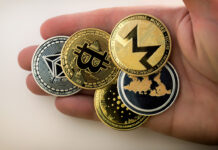Markets
Today’s economic calendar was apart from slightly better-than-expected jobless claims basically empty, giving the opportunity for the post-minutes market reaction to unfold “in peace”. The prospect of a less generous monetary policy stance obviously dents equity sentiment in the first place. Concerns about the virus spreading and economies of China and the likes slowing only reinforces the selloff in stocks as well as in other risky assets. European equities slipped more than 2% at some point but are now off intraday lows. The EuroStoxx50 nevertheless tumbles below first support of 4164. Wall Street opens with losses of half a percent. Things on commodity markets look pretty ugly too. Brent oil tanks 2-3% to the mid $66 area while copper and iron crater 2.5% and 5% respectively. The latter is also haunted by China’s pursuit to curb carbon emissions where steel production takes centre stage. On core bond/UST markets, the risk-off context still outweighs the idea of the Fed tapering bond purchases probably from Q4 onwards. US yields decline 1bp (5y) to 1.7 bps (30y). The yield dynamics make sense though, with real yields (10y) advancing 1.7 bps and inflation expectations easing some 2.5 bps. German yields fell in a kneejerk move in early European trading but recovered as the session evolved. Losses are limited both in size and across the curve. The US dollar held an overall advantage during Asian dealings, even against other safe haven currencies including the Japanese yen and Swiss Franc. That changed a bit later. USD/JPY for example retreated from an intraday high at 110.20 to 109.76 currently (virtually unchanged vs yesterday’s close). Even EUR/USD won’t go down without a fight. The currency pair slipped below the 1.17 support to a daily low of 1.1666 before recouping most of the losses. The jury is still out on whether to call the break lower “sustained”. Commodity currencies for obvious reasons are under heavy selling pressure today. CAD, AUD, NZD and NOK all lose a little less than 1% against the USD. CE currencies with the exception of the zloty are remarkably resilient. EUR/CZK and EUR/HUF trade marginally higher at 25.5 and 351 respectively. EUR/PLN jumps from 4.55 to 4.58 as local political turmoil weighs on the Polish currency. Finishing with sterling, EUR/GBP extends gains to 0.855 currently. A minor technical acceleration kicked in after clearing intermediate resistance around 0.853.
News Headlines
The Norwegian central bank kept its policy rate unchanged at 0%. Governor Olsen confirmed that given the current assessment of the outlook and the balance of risks, the policy rate will most likely be raised in September. It would be the start of a tightening cycle followed by quarterly hikes in 2021 (based on June monetary policy report). Today’s intermediate meeting served to check whether projections towards the start of the normalization cycle were still on point and they are. Keeping this week’s RBNZ experience in mind, the Norges Bank (NB) did add a Covid(-variant) disclaimer. However, contrary to New Zealand, Norway has a high vaccination rate which reduces the need for restrictions. The Norwegian krone didn’t respond to the expected outcome of the policy meeting though did weaken significantly today because of sliding oil prices and risk aversion. EUR/NOK trades north of 10.50 at the highest level since mid-July.
In further evidence of US labour market strength, weekly jobless claims last week unexpectedly fell from 377k to 348k, the lowest level since March last year. Continuing claims declined from an upwardly revised 2899k to 2820k, also a cycle low. August Philly Fed Business Outlook disappointed by sliding from 21.9 to 19.4. The setback is smaller than for example the Empire Manufacturing survey, but the Philly Fed gauge didn’t stand at multiyear highs. Details showed especially difficulties in shipments. New orders, employment and the workweek all increased. Prices paid and received are back on the rise after a July deceleration. The forward looking assessment was bleaker with worries over Covid and price pressure weighing down sentiment.













